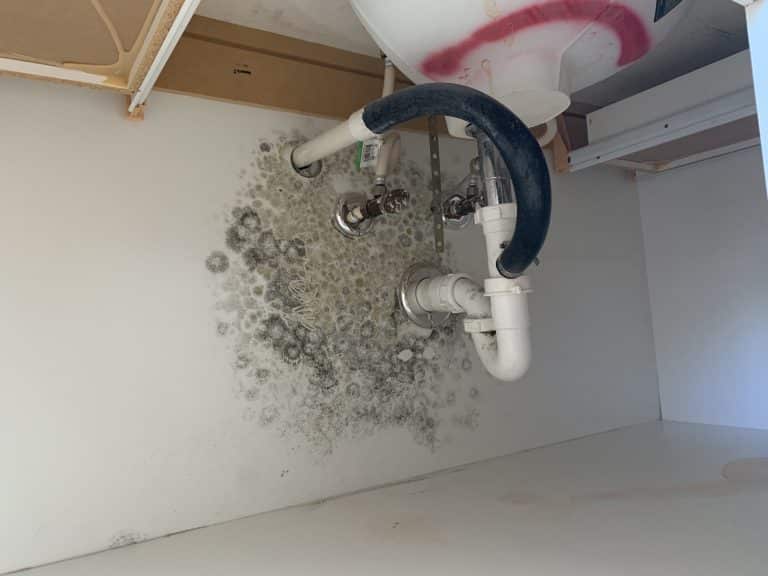As a pet owner, you want to give them all the love and care they need as part of your family.
Therefore, if they are experiencing symptoms of allergic reactions out of nowhere, there’s a chance you have household mold.
In this post, I’ll discuss the threat of mold poisoning in pets. You’ll learn what makes mold harmful to your pets and what allergic symptoms they will experience.
Finally, I will share with you the best ways on how to get rid of mold. This way, you won’t have to worry about your pets contracting mold poisoning.
Why Mold is Harmful to Pets
Mold forms at parts of your home where there are moisture and condensation. They usually have a green-blackish appearance, a slimy texture, and an earthy scent.
People get mold allergies through inhalation. The spores travel in the air, and you can breathe them into your system without warning.
Mold exposure can cause colds, watery eyes, and cough, to name a few. Sometimes, all these symptoms occur at the same time.
But if you think people have it hard, pets have it much harder when dealing with mold exposure.
For one, they can contract mold by inhaling and accidentally consuming it.
The latter happens when you leave them at home and don’t clean the areas where mold is likely to grow.
Your pet may ingest the mold where they can reach it. And the effects of ingesting mold are much more damning compared to inhaling it.
In 2007, a veterinarian uncovered pulmonary hemorrhages from two cats during pre-op. The culprit is mold that built up after a flood damaged their home. The cats did not survive the operations due to complications.
A flood may not hit your home, but the threat of mold poisoning is real. So, if you feel your pet is experiencing mold symptoms, you need to do something about it before things get worse!
Symptoms of Mold in Pets
Mold poisoning manifest to animals in different ways since they can contract it in two ways.
Aside from allergic symptoms, when inhaling mold, pets can contract fever, lethargy, and possible bleeding from the mouth and nose.
Below are other common symptoms:
- labored breathing
- wheezing/sneezing
- fur loss due to constant and excessive biting and scratching of the itchy areas
- nasal discharge (runny nose)
If ingested, pets experience may damage to the gastrointestinal tract and digestive problems. Other complications include stool changes, loss of appetite, and vomiting.
The symptoms of mold exposure may vary depending on the exposure to which type of mold[1] . The worst kind is toxic mold that produces mycotoxins. This mold type may target your liver, kidneys, brain, and other internal organs due to prolonged exposure.
How to Keep Pets Away from Mold
If you think your pet is suffering from mold poisoning, it’s best to bring him or her to the vet before the condition escalates.
But if your pet doesn’t show symptoms of mold exposure, don’t think you’re out in the clear just yet.
To prevent mold from growing in your home and affecting you and your pets, you must take the necessary precautionary measures.
Now, you might be thinking of getting a free mold inspection for good measure. After all, it wouldn’t hurt now, right?
Sadly, it could, especially if inspectors don’t know what they’re doing.
For now, however, there are ways to keep your pets safe from potential household mold. Below are a few:
Keep Their Food Safe
Mold can grow on the food of your pet if you leave it on their bowls over time.
Therefore, if it’s not time for them to eat, but the food back in a sealed container and store it in a safe place.
At the same time, clean their food and water bowls regularly to keep mold at bay.
Keep Trash Away
Pets are mostly a curious bunch. And they might get too interested enough to rummage through your trash, which can be a haven for mold to grow.
To combat this, use a trash can with a lid on top that they can’t open. Better yet, keep the bin away from where they can access it.
Wash Their Toys
It’s common for people to give their pet toys and not clean them after a while.
Whatever the reason may be for not cleaning them, you should for the sake of your pets, especially if they still play with them.
It’s best to wash the toys and other accessories at least once a week with soap and water so pets won’t get mold from them.
Wash Common Areas
Pets can get down and dirty sometimes. But this doesn’t give you an excuse to not clean areas where they usually stay.
Similar to toys, keep their sleeping quarters, litter boxes, cages, and places where they frequent clean as much as you can.
If your pets have bedding, make sure to wash it with hot water if it gets damp enough.
Keep the Air Circulating
Mold fester when contained in humid spaces. Therefore, you need to open your windows to let air circulate from outside to your home.
You can also use a dehumidifier to keep humidity levels low and provide your pets with fresh air.
When in Doubt, Get Professional Help
Let’s face it – you can only do so much as a pet owner when it comes to mold poisoning.
The tips above can help you keep mold away from your pets.
But assuming that your home has a mold problem, preventive measures won’t save you this time.
And even if you’re up to the task of removing mold from your home, it may not be enough to keep you and your pets safe from mold poisoning.
At this point, you’ll need help from professional mold inspectors.
If you’re in the Houston area, you can count on us at AMA Mold Inspections to get the job done!
Our comprehensive mold inspection services will help you get rid of mold in your home the right way – no matter how difficult it is.
If you’re interested, please fill out the form on this page or call us at 855-220-3900.








